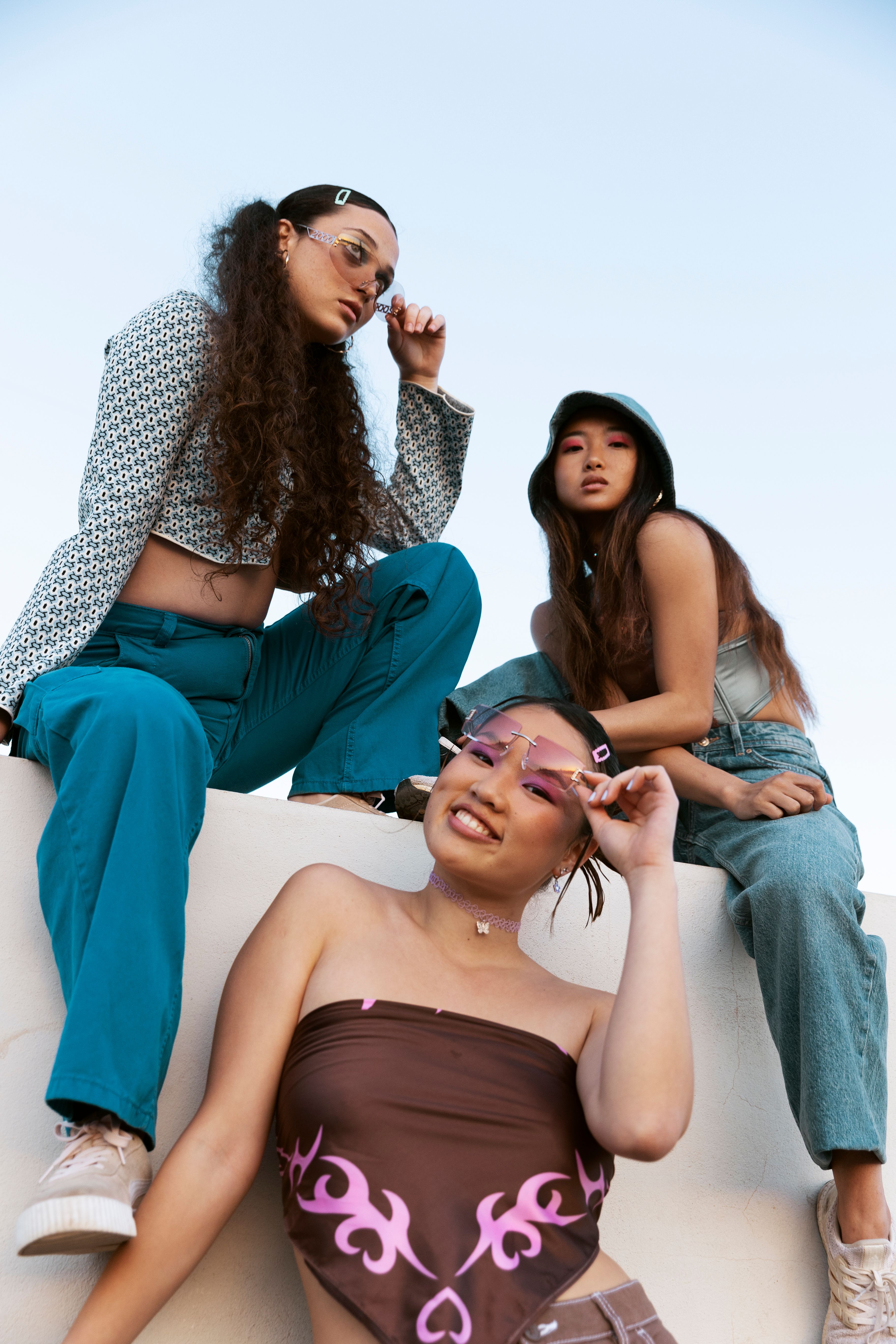Save More, Style Better: Best Low Price Shopping Apps India
Sustainable Fashion: How AI Fashion is Helping You Reduce Waste?


Shopping is fun. But it can also come with a hidden cost—one that affects the planet more than we realize. If you’ve ever bought a trendy outfit and worn it only once, or ordered clothes online just to return them, you're not alone.
Here’s the good news: Artificial Intelligence (AI) is quietly transforming the way we shop—making it smarter, more sustainable, and surprisingly personal. Especially in India, where fashion is a blend of tradition, trends, and diversity, AI is stepping in to help reduce waste and make eco-friendly choices easier for people like you.
5 Ways AI Fashion Helps with Sustainability
1. Cutting Down Overproduction and Textile Waste
Did you know that nearly 30% of clothing produced globally never gets sold? That’s a lot of waste, and a big part of the problem is overproduction.
Now, imagine brands only producing what people actually want to buy. That’s exactly what AI-powered demand forecasting is helping with.
By analyzing consumer trends, past sales, and even social media chatter, AI in fashion can predict what styles, colors, and sizes will be in demand. This means brands can produce smarter and reduce the amount of unsold inventory that ends up in landfills.
And if you’re someone who cares about the planet, it’s empowering to know your choices can influence smarter production.
2. Smarter, Personalized Shopping (That Also Happens to Be Sustainable)

Have you noticed how your online recommendations are getting more accurate? That’s AI working behind the scenes.
AI-driven platforms now analyze your shopping history, preferences, and even browsing behavior to suggest products that not only match your style but also your values.
Here’s the kicker: 67% of Indian shoppers today consider environmental impact before buying. AI can make eco-friendly products more visible to you, and nudge you toward brands that align with your sustainable choices—without compromising on style.
So the next time you get a recommendation for a T-shirt made from organic cotton or a pair of shoes from a brand that uses recycled materials—that’s AI trying to help you make a better choice.
3. Virtual Try-Ons and Fit Prediction: Less Return, Less Waste
Returns might feel like no big deal, but they create a huge carbon footprint. From reverse logistics to repackaging and restocking, it’s all wasteful.
That’s where virtual try-ons and AI-based fit prediction come in. Imagine being able to try on outfits using a virtual avatar that looks just like you—getting the right fit the first time.
Glance AI's styling feature is a great example. It lets you see how outfits look on your avatar, receive personalized recommendations, and shop with more confidence. That means fewer returns and a shopping experience that actually works for you—and the planet.
4. Inventory Optimization and Transparent Supply Chains
We often don’t see the journey of our clothes—from raw material to store shelves. But with AI and technologies like blockchain, that’s changing.
Retailers are now using AI fashion to optimize inventory, so there’s less overstocking and fewer items going unsold. It also helps ensure that items you love are available when you want them, without flooding the market.
AI can also track a garment’s full journey, making it easier for you to see whether it was ethically made, what materials were used, and who made it. This kind of transparency is empowering, helping you shop with both style and substance.
5. Greener Materials, Smarter Sourcing
Sustainable fashion tips aren't just about less waste. It’s also about using better materials.
AI fashion tools help designers and brands evaluate the environmental impact of different fabrics, recommending recycled or organic alternatives that are kinder to the planet. In a market like India’s, where textile production is massive, this shift can create real impact.
By supporting brands that source responsibly, you’re encouraging the industry to lean into eco-friendly practices. Every choice counts.
The Circular Economy: How AI Helps You Give Clothes a Second Life
The concept of circular fashion is widely recognized— where clothes are reused, repaired, or upcycled instead of being thrown away. AI in fashion plays a big role here too.
It helps identify the materials in used garments, automates sorting, and even supports resale platforms by recommending items that match your preferences.
Whether you’re buying pre-loved outfits or donating clothes for recycling, AI makes the process smoother and more efficient.
You’re not just decluttering. You’re contributing to a more responsible fashion cycle.
The Bigger Picture: Why It Matters
Let’s zoom out for a second. The global textile industry accounts for nearly 10% of carbon emissions and consumes around 93 billion cubic meters of water every year.
Now imagine the difference if more brands adopt AI fashion, It can:
- Reduce waste
- Use better materials
- Optimize inventory
- Promote sustainable fashion choices
We’re already seeing a rise in second-hand and upcycled fashion, and AI is accelerating that movement. The choices you make today—with a little help from AI fashion—can drive real change.
Wrap Up
We are living in a world of fast fashion that is impacting our environment. But the best part is we can save it and we don’t need to be an environmentalist to care about sustainable fashion. Maybe you just want fewer impulse buys, better fitting clothes, and products that match your values. AI is helping make that possible.
It’s not about being perfect. It’s about making smarter choices, powered by AI—can lead to a much bigger impact.
FAQs Related to Smart & Sustainable Shopping
1. What is the role of AI in sustainable development?
AI supports sustainable development by optimizing resource use, reducing waste, enabling smarter production, and helping industries adopt eco-friendly practices through data-driven decisions.
2. How can AI be used in sustainability?
AI enables sustainability by predicting demand, improving supply chains, identifying green materials, and minimizing environmental impact through automation, analytics, and intelligent design choices.
3. How can AI help with shopping?
AI enhances shopping by offering personalized recommendations, predicting fit, reducing returns, and promoting sustainable choices aligned with user preferences and environmental values.







